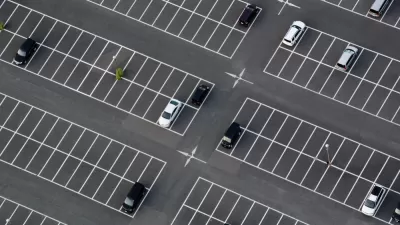San Francisco's federally-funded parking experiment SFPark will be a live test of the theories of dynamic parking management popularized by Donald Shoup.
SFPark is the largest dynamic parking demand management project in the world, with 6,000 curbside parking spaces and 11,500 off-street spaces in city-owned garages. The pilot will last for a year-and-a-half and focus on seven target areas, most in the downtown business district and tourist areas along the Embarcadero and Fisherman's Wharf.
Assuming the time line isn't delayed, the MTA will release a request for proposals by the end of January for vendors to install the technology required to map parking patterns in the pilot areas. With $19.8 million in federal funding from San Francisco's Urban Partnerhip Agreement set to roll into city coffers in February, the MTA will install meters, sensors and networks within two months and start collecting baseline data in May. After sixty days, parking managers will start adjusting parking rates, which by law can be raised by no more than $.50/hour every 30 days in the pilot zones; the control zones will not see any change in pricing throughout the trial.
Jay Primus, the MTA's SFPark project leader, believes the public outreach that has already occurred with businesses, transportation experts, environmental advocates, and community stakeholders will facilitate its acceptance. If the pilot works as projected, Primus said the MTA expects the rate of parking fines will be reduced. Though San Francisco's parking fines are 57% of parking revenues (PDF, page 3)--a far cry from New York City's parking woes, where parking fines are half a billion dollars annually and more than 500% of parking revenues--the agency hopes to fulfill its mandate to voters to improve the management of city streets."
Thanks to Matthew Roth
FULL STORY: SF's Parking Experiment to Test Shoup's Theories

Manufactured Crisis: Losing the Nation’s Largest Source of Unsubsidized Affordable Housing
Manufactured housing communities have long been an affordable housing option for millions of people living in the U.S., but that affordability is disappearing rapidly. How did we get here?

Americans May Be Stuck — But Why?
Americans are moving a lot less than they once did, and that is a problem. While Yoni Applebaum, in his highly-publicized article Stuck, gets the reasons badly wrong, it's still important to ask: why are we moving so much less than before?

Research Shows More Roads = More Driving
A national study shows, once again, that increasing road supply induces additional vehicle travel, particularly over the long run.

Judge Halts Enforcement of Anti-Homeless Laws in Grants Pass
The Oregon city will be barred from enforcing two ordinances that prosecute unhoused residents until it increases capacity and accessibility at designated camping sites.

Advancing Sustainability in Los Angeles County Schools
The Los Angeles County Office of Education’s Green Schools Symposium brings together educators, students, and experts to advance sustainability in schools through innovative design, climate resilience strategies, and collaborative learning.

Using Old Oil and Gas Wells for Green Energy Storage
Penn State researchers have found that repurposing abandoned oil and gas wells for geothermal-assisted compressed-air energy storage can boost efficiency, reduce environmental risks, and support clean energy and job transitions.
Urban Design for Planners 1: Software Tools
This six-course series explores essential urban design concepts using open source software and equips planners with the tools they need to participate fully in the urban design process.
Planning for Universal Design
Learn the tools for implementing Universal Design in planning regulations.
City of Moreno Valley
Institute for Housing and Urban Development Studies (IHS)
City of Grandview
Harvard GSD Executive Education
NYU Wagner Graduate School of Public Service
City of Cambridge, Maryland
Newport County Development Council: Connect Greater Newport



























